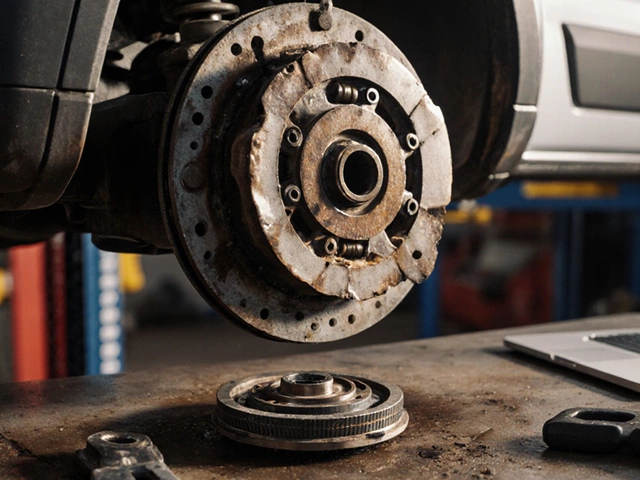
Ever see someone stranded on the hard shoulder, steam pouring from their bonnet? Nine times out of ten, they’re dealing with an engine that’s suffered because it ran low on oil. Most drivers don’t give engine oil a second thought until something goes wrong, but it’s honestly your car’s best mate when it comes to avoiding expensive disasters. Engines in 2025 are smart, but they’re not magical. They still need regular oil checks—especially for anyone driving in UK stop-and-go traffic, facing damp seaside weather, or tackling long motorway trips. So, how do you actually know if your car needs engine oil right now? Let’s get right into it.
Recognising the Warning Signs Your Car Needs Engine Oil
Imagine you’re running a marathon without drinking water. Eventually, you’d hit a wall. That’s what happens to an engine running low on oil: it overheats, parts wear out, and suddenly things go wrong fast. The first and most obvious sign is the oil warning light on your dashboard. Don't ignore this—when this light glows, your car’s sensors have detected oil pressure that’s dropped below safe levels. If you’re lucky, you might catch it before real damage is done. If you drive an older car, though, don’t trust that warning light alone. In fact, a 2024 survey by the RAC found that 65% of breakdowns involving engine failure could’ve been avoided with regular oil checks.
No dashboard light or the car doesn’t even have one? Listen to your engine’s voice. If it suddenly starts sounding louder than usual—think ticking, knocking, or a rattle when you start up or speed up—it could be crying out for oil. You might also notice your engine running rough, idling unevenly, or losing power. Sometimes it’s subtle, like sluggish acceleration or a faint burning smell—usually from oil drips touching hot engine parts. Under the car, look for fresh oil spots on the road or driveway. Even a small leak means your oil level is dropping, and if you top it up quickly you’ll avoid further trouble. Smelling burnt oil inside the cabin? Chances are, there’s a leak somewhere hot—that’s your car’s desperate SOS for attention.
Another often-missed hint is a hotter-than-usual engine temperature. If you spot the temperature gauge creeping up faster than normal and there’s no other reason (like towing a trailer up the Mendips), check your oil. Dirty or dark oil on the dipstick, especially if it feels gritty, is another red flag: old oil can’t lubricate properly. For newer cars, there are sometimes digital readouts buried in the infotainment system that can tell you when oil’s getting low, but don’t rely on these with blind faith. Even with smart sensors, a physical dipstick check never hurts. All these warning signs point to one thing: your engine desperately needs oil. Miss them, and you could be facing a repair bill that makes your heart skip a beat.

How to Check Your Engine Oil Level Properly
If you’re not used to poking around under the bonnet, checking your engine oil can seem intimidating. It’s not. Here’s what you need to know—the right way, with none of the faffing about. First, make sure the engine’s off and cool enough not to burn your hands. Your car should be parked on level ground: if it’s on a slope, you’ll get a dodgy reading. Pull the bonnet release lever (usually somewhere by your right knee if you’re sitting in the driver’s seat) and prop up the bonnet securely. Look for the dipstick—usually has a bright handle, often orange or yellow. If you’ve bought a newer electric or hybrid, check the manual: some modern cars have electronic sensors instead and may not have an old-school dipstick.
To check your oil, pull the dipstick out carefully and wipe it clean with a bit of kitchen towel or an old rag. Push the dipstick all the way back in, wait a few seconds, then pull it out again and check the oil level. There will be marks near the bottom, usually labelled ‘min’ and ‘max.’ The oil should sit somewhere between these two. If it’s below the minimum, don’t mess about—grab the right oil for your car (check your owner’s manual for the correct type) and top it up. It’s a good idea to add just a small bit at a time (around 250ml), then recheck to avoid overfilling, which isn’t great for the engine either. Here’s a quick breakdown that works for every petrol, diesel, or hybrid out there:
- Engine off and cool? Check.
- Level ground? Check.
- Lift bonnet, locate dipstick.
- Pull out, wipe clean, reinsert fully.
- Pull out again—check oil level and colour.
- If low, add correct type of oil slowly, checking each time.
For colour, healthy oil is usually a golden brown. If it looks dark, thick, or gritty, it’s probably time for an oil change. Occasionally spot a milky, frothy look? That could mean coolant is leaking into the oil—stop driving and call a mechanic. Handy table time, so you can see at a glance what your oil check might be telling you:
| Oil Colour | What It Means |
|---|---|
| Golden brown/amber | Healthy, clean oil |
| Dark brown/black (still smooth) | Oil is used but still okay, change soon |
| Black and gritty/particle-filled | Oil is dirty, change now |
| Milky or frothy | Possible coolant leak, get help |
Do this simple check every month, or before a long road trip. Cars that cover lots of short trips (as most UK drivers do) can build up condensed water, thinning the oil and making it less effective. That’s especially true in Bristol, where damp weather can mean more condensation inside an engine. Some seasoned drivers check every time they fill up at the petrol station—it only takes a minute, and it might save your savings account from disaster.

Helpful Tips and Common Mistakes When It Comes to Engine Oil
The weird thing about engine oil is that it’s both simple and hard to get right. You don’t need to be a mechanic or even particularly handy with tools, but plenty of people still get tripped up. Biggest mistake? Forgetting to use the correct oil. Cars are a picky bunch these days: putting in the wrong type (say, 10W-40 when the manual says 5W-30) can mean the oil won’t flow properly at the temperature your engine runs at, especially during frosty UK mornings. Using high-quality oil that matches your car’s spec keeps things happy. Skimping on oil quality or relying on “good enough” is like running in cheap trainers and wondering why your knees hurt after a jog.
Another classic slip-up: thinking you can just check the oil “once in a while.” Engines burn a small amount of oil normally, but if you’ve got an older car, do lots of short trips, or really push your engine, it can disappear a lot faster. I spoke recently to a Bristol taxi driver who checks his oil every Friday—the habit started after he nearly lost his engine going up Park Street in rush hour. If you notice your oil dropping rapidly, suspect a leak, worn seals, or just the effects of a really old engine. Remember, too, that turbocharged and high-performance engines often use more oil than you’d expect, so they beg for more frequent checks. Data from Halfords in 2024 showed hybrid and small turbo engines are the most commonly neglected—but when they go wrong, they’re anything but small problems to fix.
No one likes the mess of an overfilled sump either. Adding too much oil can cause foaming, make its way into places it shouldn’t, and even lead to oil seals blowing. If that happens, it’s a case for professional help. In a similar vein, don’t just “top up and forget about it” if your oil light comes on often. Frequent low-oil warnings mean there’s an underlying problem, so get the car looked at. Here’s another one: if you’re topping up regularly but the oil always looks dark or smells burnt, time for a proper change. Oil degrades with heat and miles, losing its ability to protect and clean moving parts.
If you want to go the extra mile, keep a small litre bottle of your car’s preferred oil in the boot or glovebox. It’s one of those simple things—like having a sturdy umbrella on a typical Bristol day—that makes a huge difference when you need it. Get your oil changed at the recommended intervals, usually every 10,000 miles or 12 months for most modern cars, but check your car’s manual to be sure. Engine technology changes fast, and some models need longer-life oils (often called “fully synthetic”). Check those labels and stick to the schedule.
So, next time you hear your engine sounding tired, spot a suspicious warning light, or just can’t remember the last time you checked under the bonnet, take the hint. Engine oil isn’t just another job on the list—it’s the lifeblood of your car. Got a minute? Give your dipstick a look. You and your wallet will thank you.



